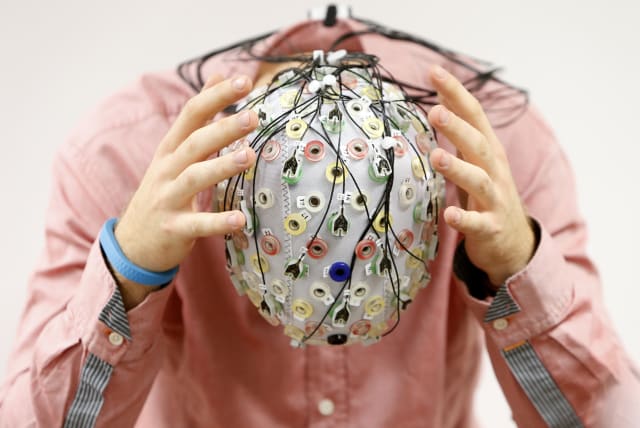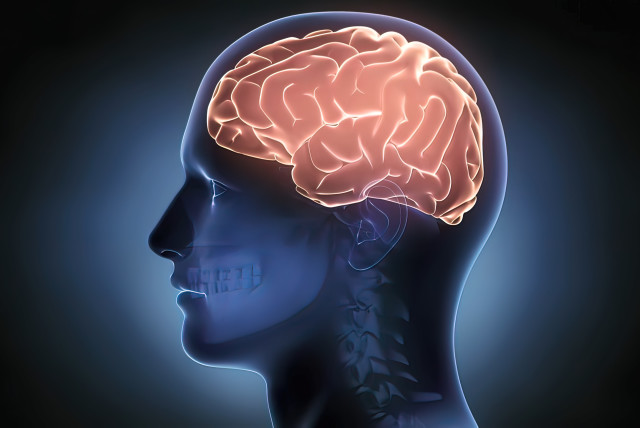Two-stage brain coding explained by University of Haifa study

“Understanding the language that the brain uses to speak to itself will enable us to understand better how to transfer information to and from the brain with precision,” according to Prof. Eran Stark
Understanding how the brain encodes information is important to understand how parts of the body “communicate” with the brain – for example, if doctors want to connect a prosthetic hand or leg to the brain and let the brain operate it.
“Understanding the language that the brain uses to speak to itself will enable us to better understand how to transfer information to and from the brain with a high degree of precision,” according to Prof. Eran Stark of the Sagol neurobiology department at the University of Haifa who led a study just published in the prestigious journal Science under the title “Local activation of CA1 pyramidal cells induces theta-phase precession.”
To encode new information, brain cells in the hippocampus – a complex brain structure embedded deep into the temporal lobe that has a major role in learning and memory – activate a mechanism that triggers an increase in the firing rate and influences the precise timing of the firing.
The importance of understanding the brain
“The new study shows us that local circuits in the brain are more sophisticated than we might have thought. The brain can encode information in two different ways, one of which causes the other,” Stark explains.
The question of how the brain encodes new information it receives is one of the most important and complex issues in understanding processes of learning, memory, and more.
One of the main problems involved in understanding coding mechanisms concerns the difficulty in “controlling” neurons and making them act in a particular manner.
Until now, neurobiologists knew that during the encoding of new information (specifically, the identification by mice of new places within space), neurons in the hippocampus participate in two processes.
What are the two processes that occur?
The first process entails an increase in the firing rate of the individual cell.
In simple terms, the cell fires more times within a given period of time. The second process is a change in the timing mechanism. Theta waves with a frequency of 8 Hertz occur in the hippocampus, and it is possible to measure precisely when within the shape of the theta wave the cell fires – at what timing (phase) “along the wave.”
In the second process, when entering a new place in space, the neurons initially fire at the peak of the wave, then at an earlier phase, and on leaving the new place, they again fire close to the peak of the wave – a process known as phase precession.
According to the current state of knowledge, both of these processes occur simultaneously in the same cell in mice during the encoding of new information concerning spatial location.
Until now, however, it was not known whether there is a causal relationship between the two processes – does one cause the other or do they operate independently? In addition, if there is a causal dependence between the two processes, it has been unclear what mechanism promotes the conversion of the code for the firing rate into a temporal code for phase precession, causing the two to operate simultaneously.
Over the years, six groups of mathematic models were proposed, each assuming a different mechanism for the relationship between the two processes.
A new study at Tel Aviv University
In the new study – which was headed by Stark while he was the head of the Center of Excellence for the Study of the Neural Code underlying Cognition at Tel Aviv University TAU, the researchers used optogenetic technology that uses a special protein channel that reacts to light: each time the protein is exposed to blue light, the electric potential inside the neuron changes and it fires.
The researchers implanted miniaturized optoelectronic devices in the brains of freely moving mice and, using closed-loop feedback methods, caused an individual cell in the hippocampus to increase its firing rate artificially – the condition for the first process of information encoding.
The researchers monitored the mouse as it moved back and forth along a track –as it used coding mechanisms for spatial recognition.
In some track crossings, the researchers caused an increase in the firing rate of the examined cell in the hippocampus, and in others, they did not.
This allowed them to examine the effect of the artificial constraint on the firing rate at different points and times and under different conditions and thereby compare their results to “control” instances.
The findings showed that when the researchers increased the cell firing rate and created a new rate code, a change occurred in the precise timing of firing, and a phase code emerged. When the firing rate was not increased, no change in timing was observed. Thus, a clear causal relationship could be seen, whereby increasing the rate causes a change in timing.
“Firstly, it is important to clarify that although we examined the six existing model groups, there may, of course, be additional explanations we did not consider that are correct,” Stark stressed.“If we wish to elaborate the model that explains the observations, we need to understand where the additional wave that causes interference comes from. For there to be a new wave, there must be an additional oscillator – something that creates the oscillations that form the faster waves," Stark added.
"Regarding the practical ramifications of understanding the brain mechanism for the first time, Stark said that for us to communicate effectively with the brain, we need to use its own language (code). Before our study, it might have been assumed that the brain uses several separate systems to operate the two codes simultaneously –that the brain uses several languages. But now we know that at least in one area of the brain, one code – the rate code – can be automatically converted into a code for precise timing that may be better suited to the transmission of information between the cells but is harder to implement artificially. So, if we want to elaborate the model that explains the observations, we need to understand where the additional wave that causes interference comes from,” he concluded.
Jerusalem Post Store
`; document.getElementById("linkPremium").innerHTML = cont; var divWithLink = document.getElementById("premium-link"); if (divWithLink !== null && divWithLink !== 'undefined') { divWithLink.style.border = "solid 1px #cb0f3e"; divWithLink.style.textAlign = "center"; divWithLink.style.marginBottom = "15px"; divWithLink.style.marginTop = "15px"; divWithLink.style.width = "100%"; divWithLink.style.backgroundColor = "#122952"; divWithLink.style.color = "#ffffff"; divWithLink.style.lineHeight = "1.5"; } } (function (v, i) { });

